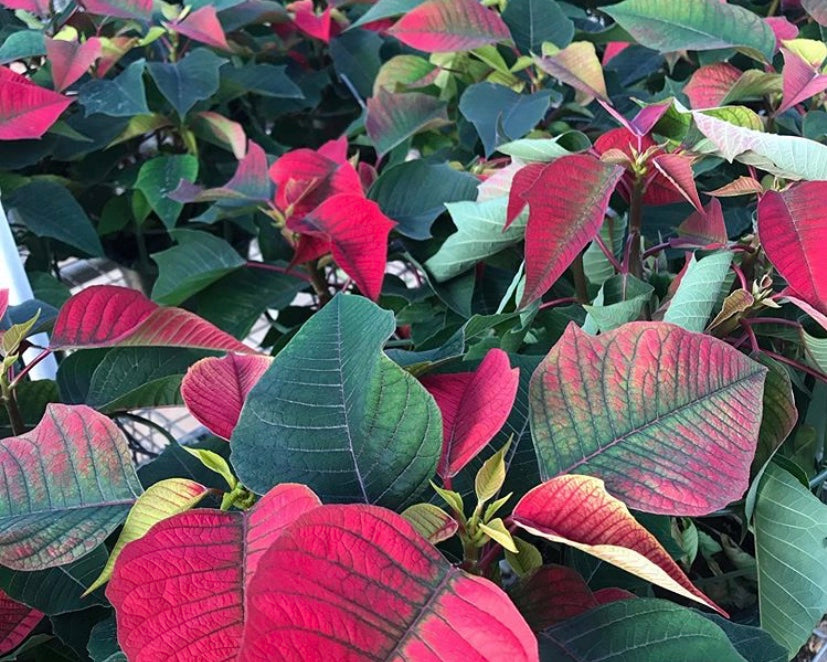Top 7 Mistakes Teachers Make with Greenhouse Temperature Controls

Being an Ag teacher is hard enough, but add a greenhouse into the equation and things get exponentially harder. None of us are greenhouse experts but if we can keep the plants alive and not burn the whole thing down, then it's a win. Here are a few mistakes some of us have made and you can hope to avoid when adjusting the temperature controls on your thermostats.
1. Shutting down the entire greenhouse for the summer. At the bare minimum you will destroy the temperature sensors on the thermostats. They have limits and if you exceed them they will burn out. However, I've heard of greenhouses getting in the 120 plus range and that's when plastics start to melt, seals crumble, and the PVC plumbing starts to crack. Your administration will likely show up with this bright idea to "save the school money", but in the long run the several hundred dollars you save on power will be for naught when they have to spend thousands to tens of thousands of dollars to refit a greenhouse that cooked for an entire summer.
2. Leaving plants in front of the heater. Yeah I did this too. It was the first real cool spell we had and it was time to start monitoring the minimum temperature in the greenhouse. So we turned the heater on. All the Boston Ferns within a 10 foot arc of the blower were dried to a crisp the next morning. Luckily they didn't catch fire.
3. Trying to "get by" with fewer controls. Depending on how your greenhouse is rigged you may have 3, 4, or more thermostats to set. I had four thermostat controls: low speed circulation fans (HAF fans), low & high speed HAF fans, cool cell with low speed exhaust fan, and hurricane. The two lowest settings are designed to keep air moving so that the main fans come on less often during moderate temperatures in the spring and fall. If you burn out these modules and decide to "let them go for now" you will get temperature differences between the top and bottom of the greenhouse because no air circulates until the low range main fan comes on. This happens a lot fast when no air circulates. Plus air needs to move in the greenhouse. Humid and dry air need to mix to make moist air for proper plant health. Stagnant air is not a friend to plants.
4. Letting the cooling cell dry out. That's no good. The cooling cell system has to be looked at (inspected by you) regularly so that problems can be avoided. A small hot tub chlorine tablet (or a piece of a big one) to zap the algae can save your sump pump a lot of excess work. Dry spells with evaporate away your circulating water and your pump will burn up from pumping air. Clogged cells with increase water pressure making your pump work harder. Large leaks (hard to not have small drips on a cool cell) will drain the cell system quick as well. Then you have no cooling and a slippery floor. The cooling cell not only moderates the greenhouse temperature but it also provides some humidity to the house. Once you lose that, then watering rates go up and fans have to work that much harder and probably can't keep the temperature within a good range for your plants.
5. Not having the proper range set for your plants to grow correctly. This one is tricky but can make you go mad if you don't understand the importance. Peppers more so than tomatoes need periods of cool air at night to contrast the warmer days in order to produce fruit. If you move from spring to summer and are not conscious of your control settings, then you may not notice your night time temperatures in the greenhouse are staying to warm. Because I never went to my greenhouse at 5 AM to see what it felt like on a July morning. Peppers and tomatoes are just examples but you get the idea. Poinsettias are the same way. Some people believe ANY light will ruin their Points crop but temperature is important too. As you move into fall, the Points need to feel some cool night air especially if the day time temperatures stay warm a little too far into fall. If you don't recognize this, then your Points will never develop the deep color by the Holiday season because they stayed too warm. So make sure your high volume fans are pulling in the cooler night air as required by your plants. It doesn't have to be all night but enough to really moderate those temperatures during the season.
6. Shade cloth. My first late spring/early summer with a greenhouse I could not keep the temperature down inside the house. Could not. I swear the ventilation fans ran all night too. My college roommate (Pete my greenhouse expert) commented at a teacher meeting that I might have the wrong shade cloth for my area. As in, not shading out enough light from the house. I thought to myself, "Or it could be the shade cloth is still in my closet in my office at school." Needless to say my eighth grade boys loved taking a class period to secure the shade cloth to the house. And it was nice to hear the fans not running when I came to school the next morning. Save your power bill and do your plants a favor by putting some money into a shade cloth.
7. Keeping the greenhouse too cool. I'm sure some of you laughed at this one but cloudy spells of just a few weeks can introduce some pretty nasty stuff to your plants. Plants, most plants anyway, want to dry out a little after a good soaking. They don't like wet feet. If you don't get enough sun to properly kick in transpiration and general water evaporation then your plants will have some pretty soggy roots. Add the dimension of your students watering and not keeping an eye on the weather and you are begging for root rot and other good time diseases into your greenhouse. Plus, your plants will start to stagnate their growth and that'll put you behind schedule for your plant sale. You may have to back that shade cloth off for a few weeks until things get nice and toasty again. That usually happens the day after you break your back to get the cotton pickin' thing off.
I am sure you can provide more temperature control mistakes. Post them in a comment below or email them to me at brian@onelessthing.net and I'll post them on your behalf. Feel free to also share any photos of greenhouse disasters and we'll gladly commiserate with you. Cause we've all been there. Sometimes more than once. Good luck and keep those pots heavy.



